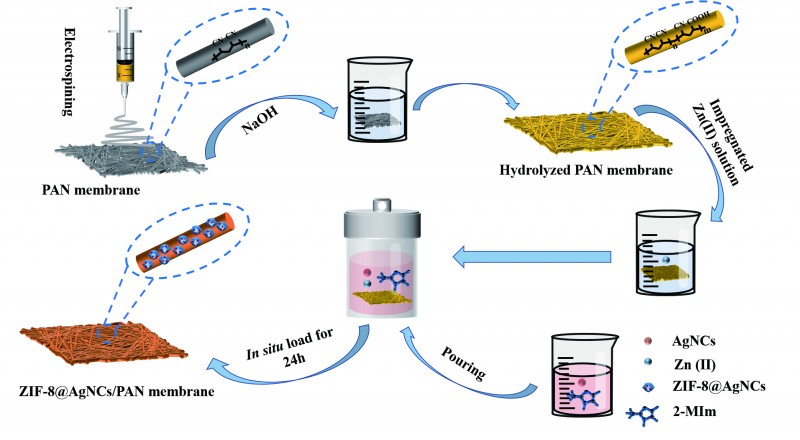| Apr 25, 2023 |
Treating polluted water with nanofiber membranes
(Nanowerk News) When oil contaminates water, it creates a film that reduces oxygen levels and introduces toxic substances. This can lead to the death of aquatic plants and animals, contaminate soil, and ultimately threaten human health.
|
|
Separating oil from polluted water is therefore of great importance. Current methods can be expensive and challenging, and some may introduce further pollutants into the system. For example, membrane materials can act as a barrier to intercept oil, but their efficiency is low and they aren’t suited for long-term use.
|
|
In Biointerphases ("Polyacrylonitrile nanofibrous membrane composited with zeolite imidazole skeleton-8 and silver nanoclusters for efficient antibacterial and emulsion separation"), an AVS journal published by AIP Publishing, researchers in China developed a fabrication method to increase the efficacy and longevity of membrane separation technology. The technology is greater than 99% effective at separating a petroleum ether-in-water emulsion.
|
 |
| Schematic diagram of the preparation of the nanofiber membrane. (Image: AIP)
|
|
The team created a nanofibrous membrane with electrospinning, in which a liquid polymer droplet is electrified and stretched to make fibers. They increased the roughness of the membrane surface by loading it with silver nanoparticles.
|
|
In water, this rough surface promotes a stable layer of water, which acts as a barrier to prevent oil droplets from entering the membrane.
|
|
“This hydration layer efficiently impedes the passage of oil droplets, reducing membrane pollution and enhancing the composite membrane's permeability and separation efficiency,” said author Jindan Wu.
|
|
Silver nanoparticles also enhance the membrane’s antibacterial properties. Incorporating them minimizes the risk of membrane corrosion that can be caused by microorganisms.
|
|
“We have discovered that the membrane's surface roughness and hydration layer strength are critical factors that impact its separation performance and anti-fouling ability,” said Wu. “This concept of depositing particles on nanofibrous membranes also has potential for broad applications with other materials.”
|
|
The current output capabilities of this fabrication method are relatively low. However, the group hopes developing such materials will contribute to a comprehensive solution for treating water pollution.
|
|
“Water pollution is caused by multiple sources, and oily wastewater is just one of them,” said Wu. “It is of vital importance to develop materials that can treat for dyes, heavy metals, and bacteria present in water.”
|

